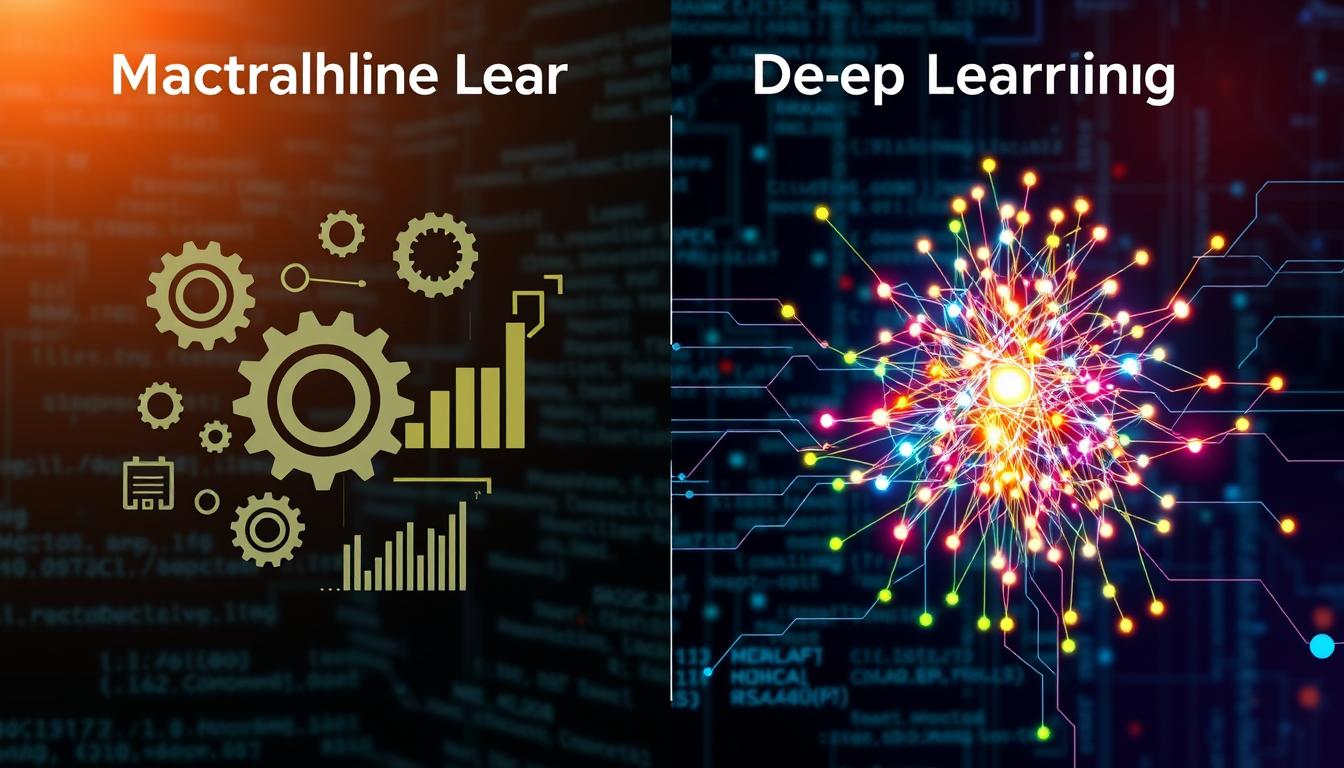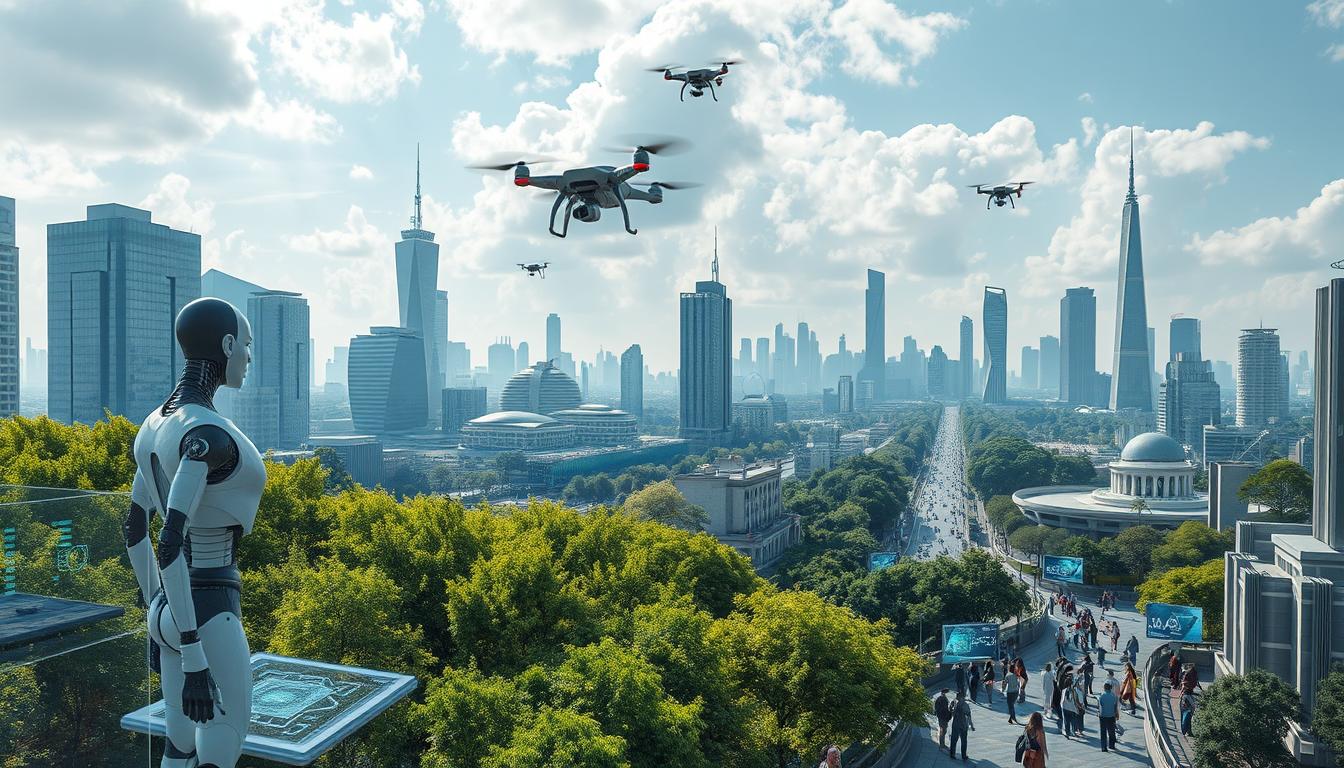In the world of artificial intelligence (AI), two important areas have grown: machine learning and deep learning. These fields are key to solving complex problems and unlocking new applications. It's crucial to know how they differ.
Machine learning is a traditional AI method. It uses algorithms that let systems learn and get better over time. These algorithms are supervised, unsupervised, or reinforcement learning, each with its own uses.
Deep learning, on the other hand, is a newer form of machine learning. It uses artificial neural networks to learn like the human brain. This has led to big advances in computer vision, natural language processing, and speech recognition.
Choosing between machine learning and deep learning depends on the problem, the data, and the needed performance. Knowing the differences in data, model architecture, and training is key. This helps AI experts pick the best approach for their projects.
What is Machine Learning?
Machine learning is a key part of artificial intelligence. It lets systems learn and get better over time without being told how. It uses algorithms and statistical models to help computers do tasks well by using data.
There are three main types of machine learning algorithms. These are supervised learning, unsupervised learning, and reinforcement learning.
Types of Machine Learning Algorithms
Supervised learning algorithms are trained on data that has labels. This means the correct answer is known, and the algorithm learns to match the input with the output. Examples include linear regression and decision trees.
Unsupervised learning algorithms find patterns in data without labels. They use techniques like clustering and dimensionality reduction. Reinforcement learning algorithms learn by interacting with their environment. They get rewards or penalties for their actions and adjust their behavior.
Applications of Machine Learning
Machine learning is used in many ways across different industries. In predictive analytics, it helps forecast trends and patterns from past data. Computer vision algorithms, powered by machine learning, are used for tasks like image recognition and autonomous vehicle navigation.
Natural language processing is another area where machine learning shines. It lets computers understand, interpret, and generate human language. This is used in chatbots, language translation, and analyzing how people feel about things.
Machine Learning: A Traditional Approach
Machine learning has changed how we make decisions with data. But, its traditional way is more hands-on than deep learning. At its heart is feature engineering, where experts carefully pick and prepare data features.
Feature engineering is key in traditional machine learning. It shapes the data to fit the algorithms. This process needs a deep understanding of the data and the problem it solves.
After preparing the data, experts choose and fine-tune the best algorithms. This back-and-forth of improving the model is what traditional machine learning is all about. It makes sure the model works well for its specific task.
The traditional approach needs more effort and knowledge. Yet, it's very effective for solving complex problems. By focusing on feature engineering and model optimization, experts can create tailored solutions. These solutions meet the unique needs of businesses or research goals.
Deep Learning: An Evolution of Machine Learning
Deep learning has changed how we analyze complex data and solve problems. It's different from traditional machine learning because it uses artificial neural networks. These networks can learn and find important features in data on their own.
Deep learning relies on deep neural networks with many hidden layers. These layers help learn data in a hierarchical way. This means deep learning can handle complex data without needing to manually prepare it. It's especially good at tasks like recognizing images, understanding natural language, and recognizing speech.
The move from machine learning to deep learning has made it possible to solve harder problems. Deep neural networks can learn important features from raw data without needing manual help. This has led to breakthroughs in areas like computer vision, natural language understanding, and predictive analytics. Deep learning has shown to be better than traditional machine learning in these fields.
Key Differences Between Machine Learning and Deep Learning
Machine learning and deep learning are changing artificial intelligence. It's important to know how they differ. These differences affect how well they work, how much they can handle, and how easy they are to understand.
Data Representation
How they handle data is a big difference. Machine learning needs experts to pick out important data points. Deep learning, however, can find these points itself, often doing better without human help.
Model Architecture
The models themselves are also different. Machine learning models are simple, like linear regression. They're easy to get and understand. Deep learning models are complex, with many layers. They find deep patterns but are harder to understand.
Training Process
The way they're trained is also different. Machine learning uses simple methods on small datasets. Deep learning needs lots of data and powerful computers. It uses advanced techniques to learn from its data.
FAQ
What is the difference between machine learning and deep learning?
Machine learning is a wide field that uses many algorithms to help systems learn and get better over time. Deep learning is a part of machine learning that uses artificial neural networks. These networks automatically learn and find important details in data.
What are the different types of machine learning algorithms?
There are three main types of machine learning algorithms. Supervised learning uses labeled data to train models. Unsupervised learning finds patterns in data without labels. Reinforcement learning uses rewards and penalties to help an agent learn.
What are some common applications of machine learning?
Machine learning is used in many areas. It helps with predictive analytics, computer vision, and natural language processing. It's also used in recommendation systems and fraud detection. This technology is used in healthcare, finance, and e-commerce to analyze and predict data.
What is feature engineering in machine learning?
Feature engineering is about choosing and preparing the input variables for a machine learning model. It involves picking the most important features from raw data. This step is crucial for the model's accuracy and success.
How does deep learning differ from traditional machine learning?
Deep learning and traditional machine learning differ in how they handle data and models. Deep learning uses deep neural networks to automatically find features in data. Traditional machine learning needs more human help in selecting features and models.
What are the advantages and disadvantages of deep learning compared to machine learning?
Deep learning models often perform better on big datasets but need more computing power. They are also less easy to understand than traditional machine learning models. Machine learning is better for smaller datasets or when you want to understand data relationships. Deep learning is great for tasks like computer vision and natural language processing.



